After breakfast and a leisurely morning, we left at 9:30 and boarded our coach for the drive to Cooya Beach. We were greeted by our guide Lync who told us about the fishing and gathering ways of his family and the region.
He guided us to a small tree area and before he started his talk, he lit paperbark and waved it around all of us. This is called a smoking ceremony and it is an ancient as well as a contemporary custom among some Aboriginal Australians. The smoke is believed to have both spiritual and physical cleansing properties, as well as the ability to ward off bad spirits. Our guide said it was to protect us from anything bad happening to us.
We stood under a canopy of trees and he said that sometimes snakes can drop from the trees. Fortunately, none came down while we were there.
He showed us turtle shells from turtles that were large enough to feed hundreds of people. He also showed us boomerangs with different shapes and different purposes. Some boomerangs are to throw at birds to knock them down as they were flying, while other boomerangs are used to break the legs of a kangaroo to fell them.
We enjoyed homemade bread with sugar cane syrup and butter and he cracked open a coconut shell and we all drank from the shell and savored the milk.
We walked down to the beach. You have to be cognizant of crocodiles and you have to stay near the foliage and not go by the water’s edge. The water is also filled with jellyfish that have deadly stingers.
He picked leaves from a plant and rinsed them in the water and we put it on our skin. It is used as a bandage or as a cooling agent in warm weather. He also picked flowers and we tasted them and Lync said they are used in salads.
Lync reached into a Yangga nest (green ants) and had many crawling on his hand. These ants have medicinal purposes and are used to combat coughs and flu. You can eat them or crush them and then inhale their vapor which smelled like Vicks vapor rub.
He grabbed each ant by the back part so those who wanted to (of course I did) could grasp the ant by the head and then lick the back part. It tasted like lemon.
Lync played the Didgeridoo for us and then we all had a lesson in spear throwing which is how they catch their fish. Some natives are able to throw a spear the length of a football field.
His family paints burny beans and they make them into trinkets for sale so I purchased one that I’ll make into a slide. Burny beans are rubbed on a flat stone to make a spark to start a fire.
We drove to Mossman Gorge, the gateway to the Daintree Rainforest region. This is the oldest rainforest in the world, and home to the Kuku Yulanji people for more than 50,000 years.
We met with a local Kuku Yalanji and learned about his culture. Before we began, we had another smoking ceremony. We walked around in a circle around a fire that was burning paperbark and we all got close to the smoke to inhale it so it would protect us and drive away the evil spirits. Our guide chanted while we walked.
Afterwards he told us about his customs and how some of the local plants are used. It was very interesting.
We enjoyed lunch and then went on a nature hike through the lush rainforest. Susan pointed out all of the interesting vines and trees along the way. We arrived at the rocky fast flowing water where kids were swimming. They were stupid because there were signs all over saying you cold not swim today because it was too dangerous. Susan said people do not listen to the warnings and some sadly drown.
Before dinner, we met with a marine biologist who talked about the Great Barrier Reef and coral bleaching.
The Great Barrier Reef is one of the most complex natural phenomena on earth. It is composed of almost 3,000 individual reefs and it is so large it can be seen from outer space.
The biologist said the reef is composed of and built by billions of tiny organisms, known as coralpolyps. However, climate change, overfishing, and cyclones, among other things, have created lasting damage and has contributed to coral bleaching.
When the water is too warm, corals expel algae that lives within their tissue. This causes the coral to become white. It isn’t dead and can possibly survive until conditions get better. But if the detrimental conditions continue, the coral will continue to be under stress, and can die. In 2020, a study found that the Great Barrier Reef has lost more than half of its corals since 1995 due to warmer seas driven by climate change.
It can take decades for coral to recover from a bleaching event so it is vital that these events are few and far between.
After listening to the biologist, we went for dinner and then went back to our rooms to prepare for our outing tomorrow – snorkeling in the Great Barrier Reef.
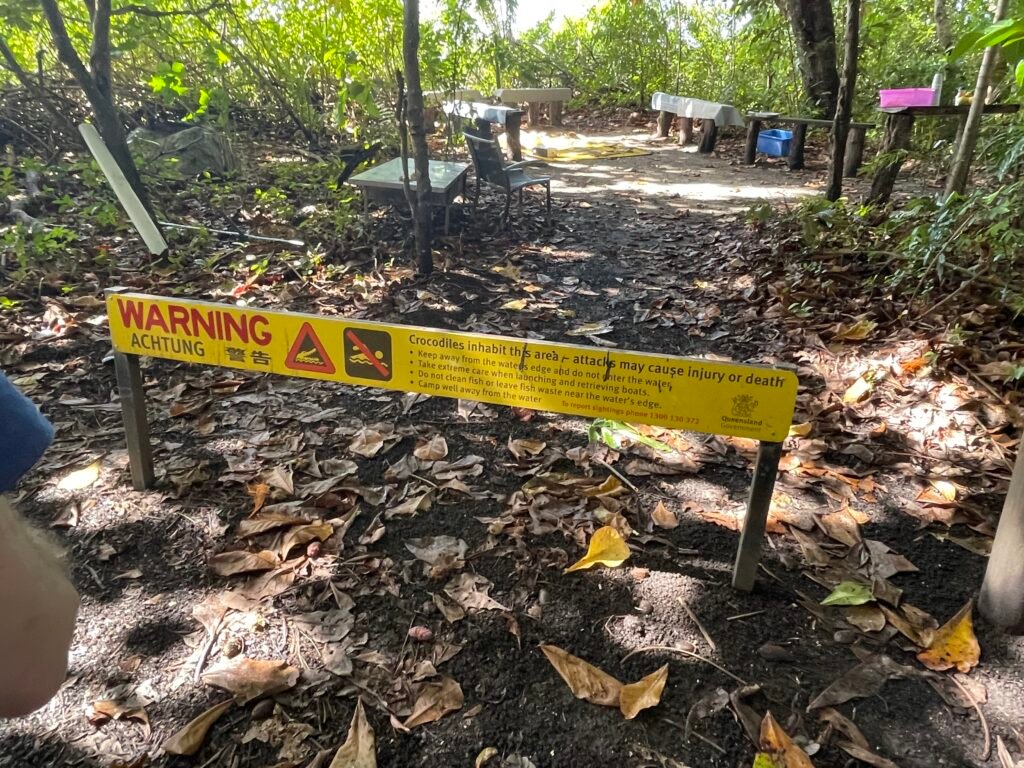
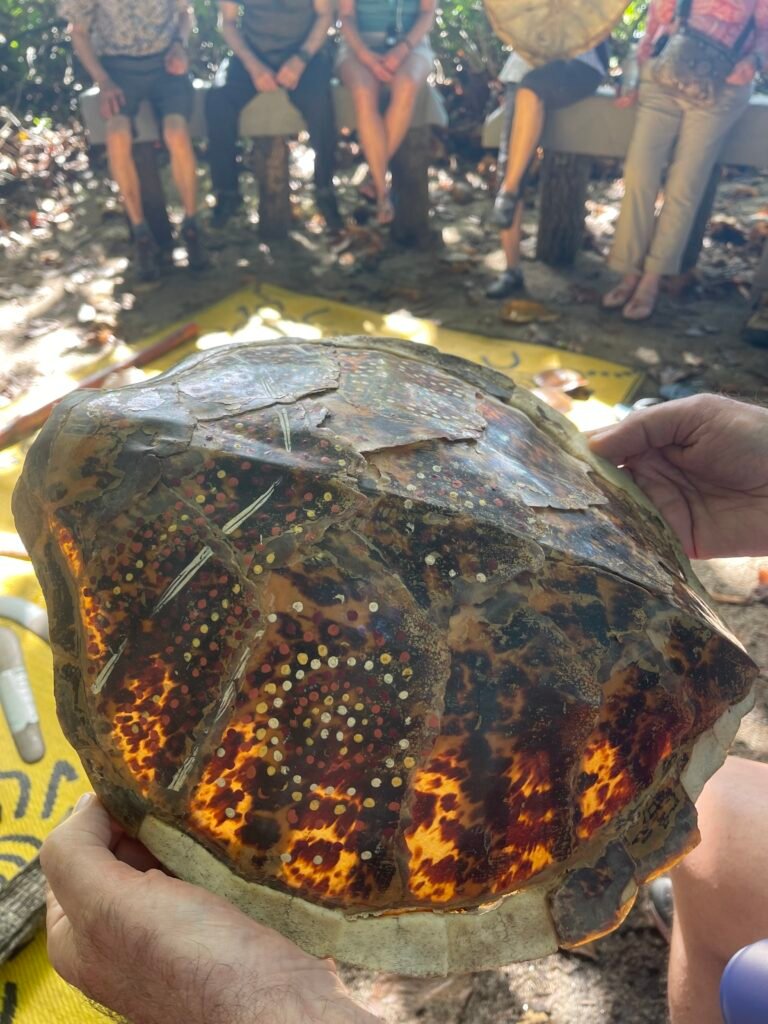
Turtle shell
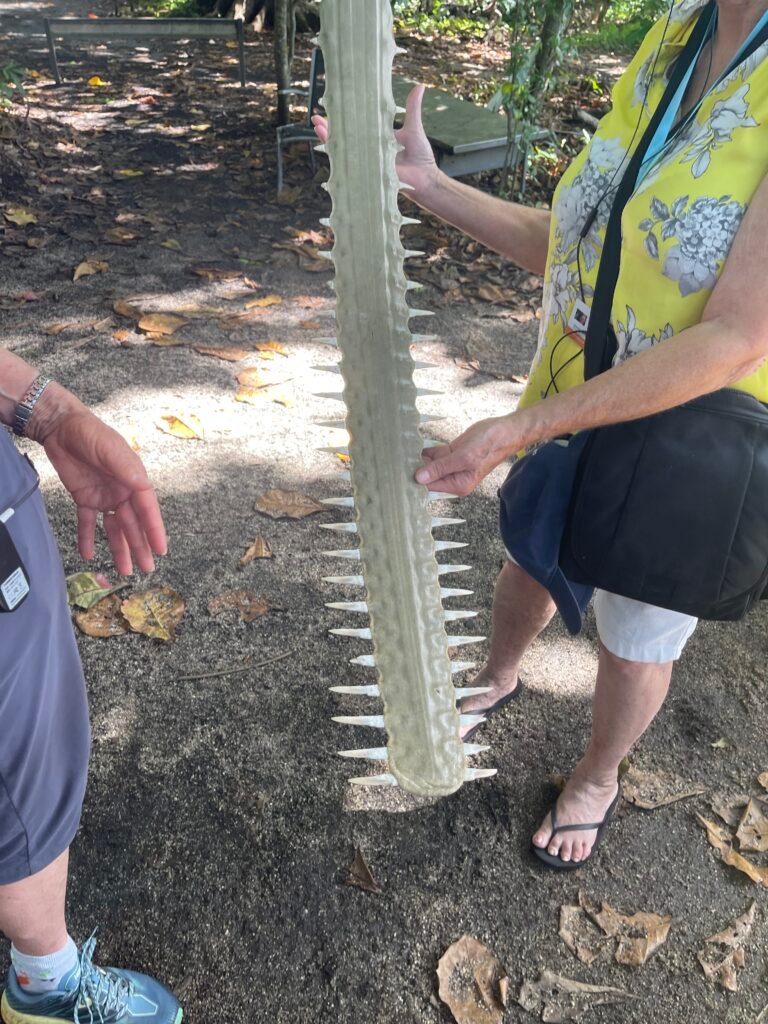
Sawfish
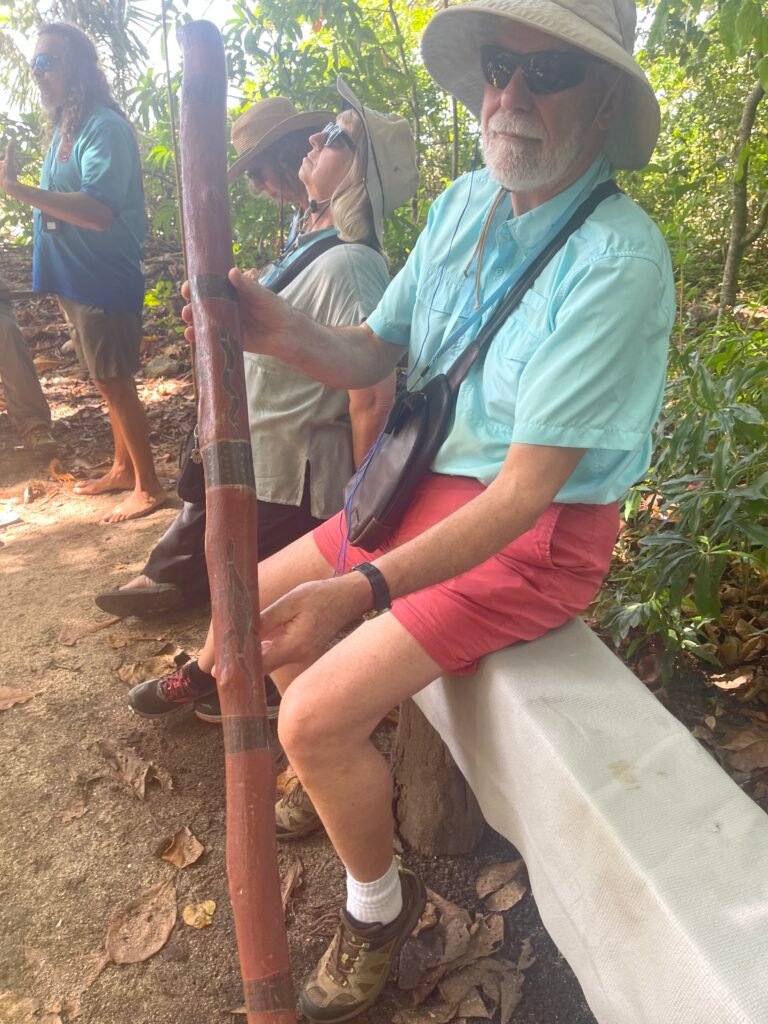
Didgeridoo
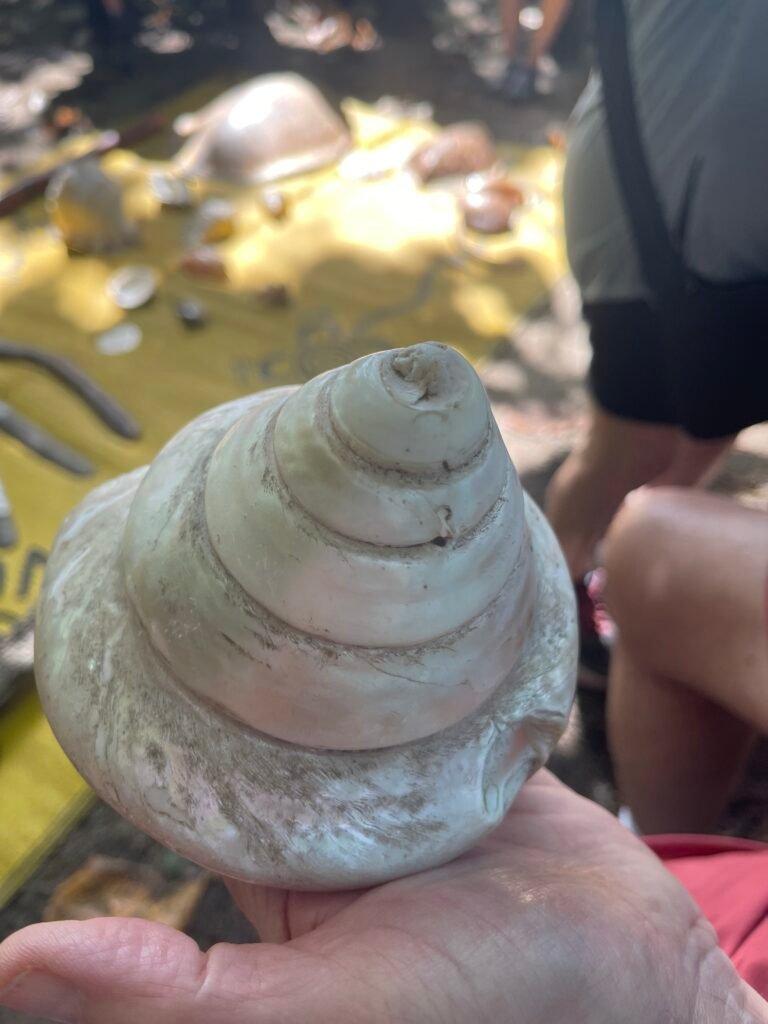
Mother of pearl shell they use to make buttons out of
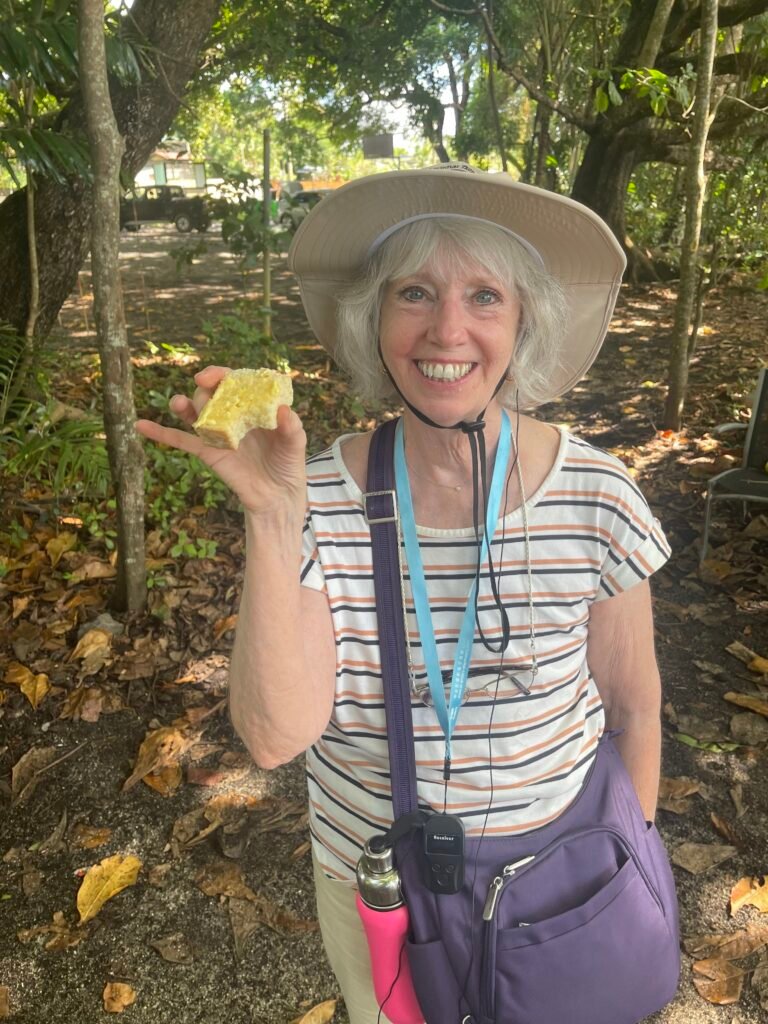
Delicious bread with butter and sugar cane syrup

Medicinal plant leaf
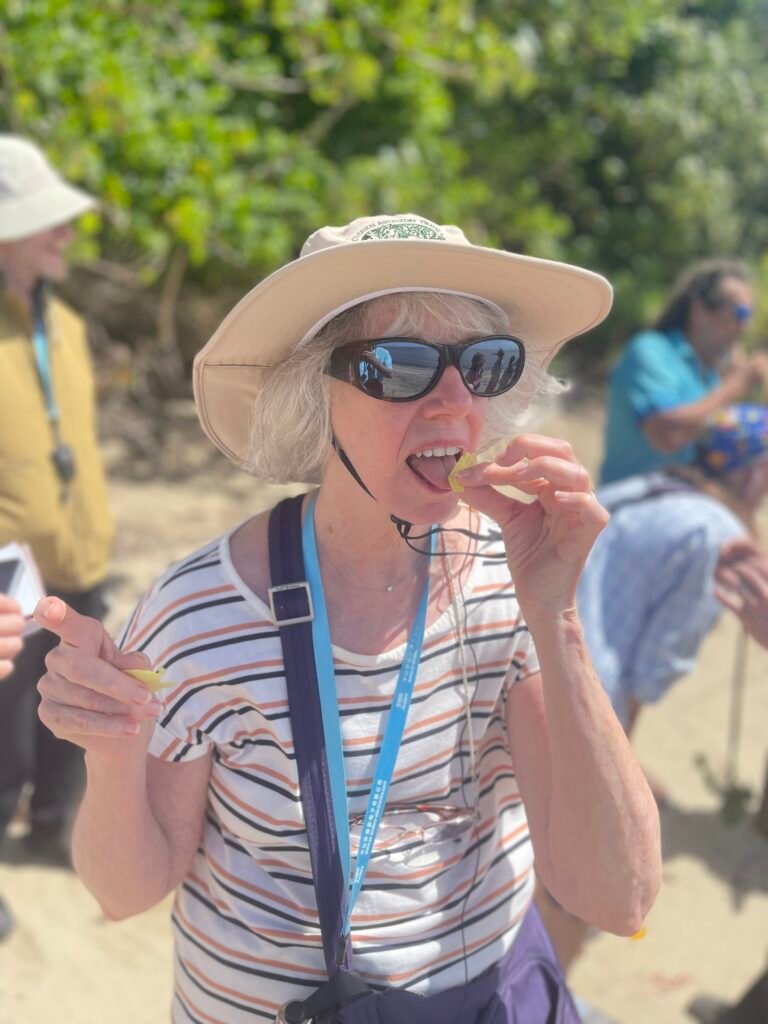
Eating a flower

Licking the end of the green ant
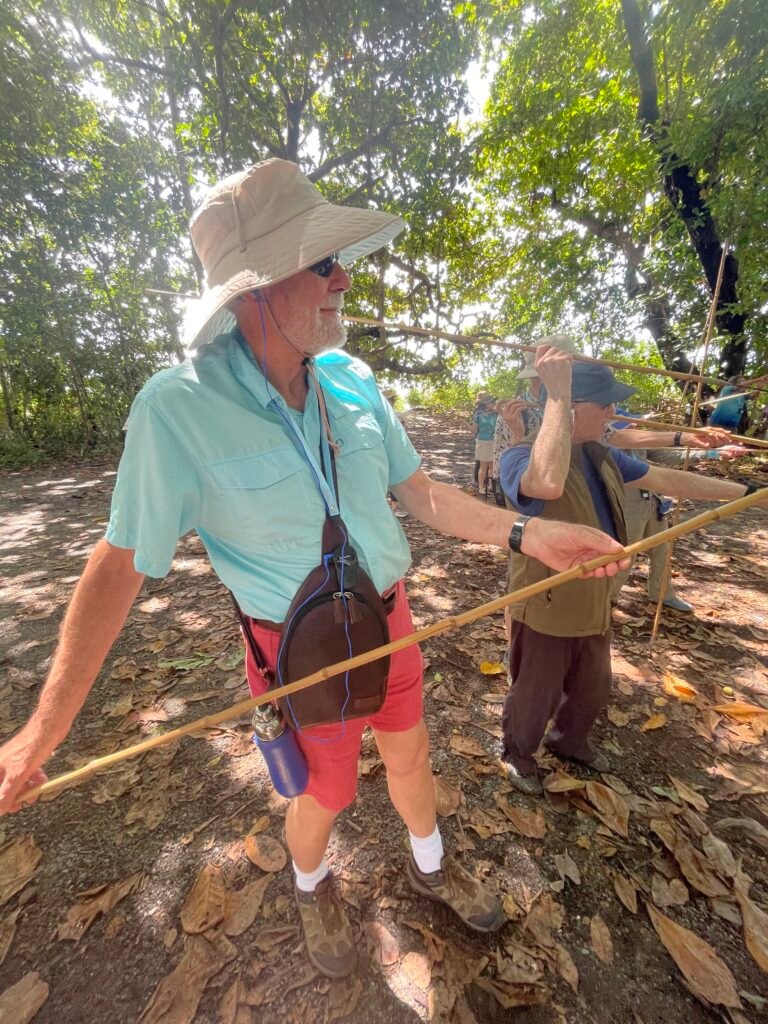
Spear throwing
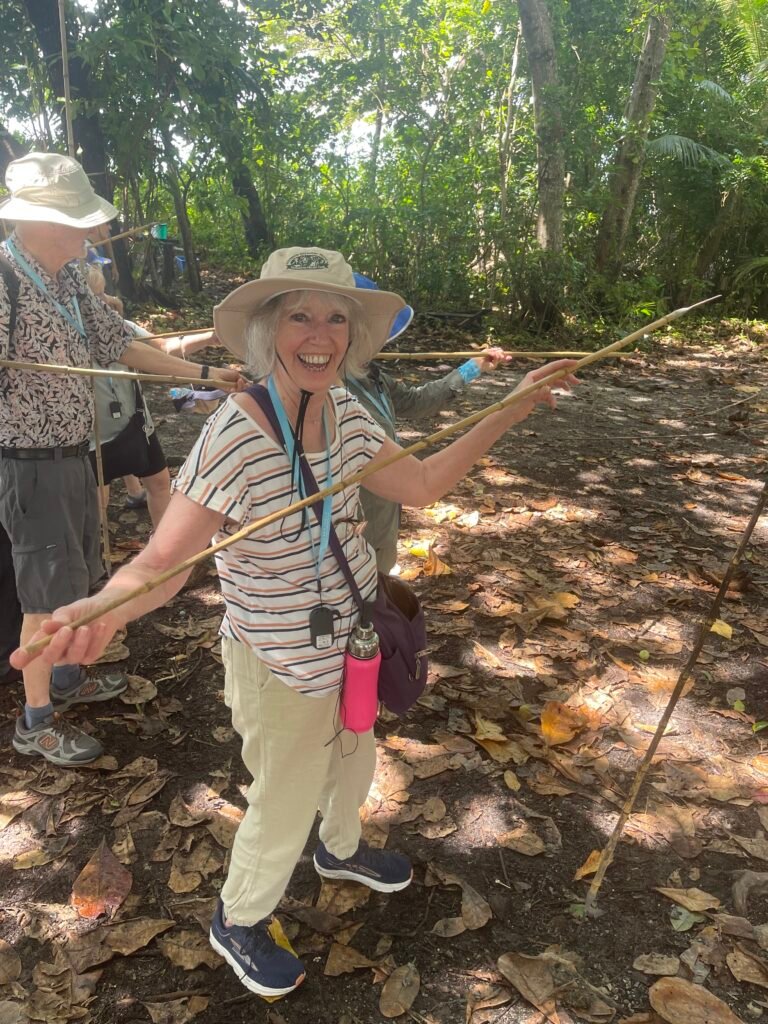

My necklace slide to be
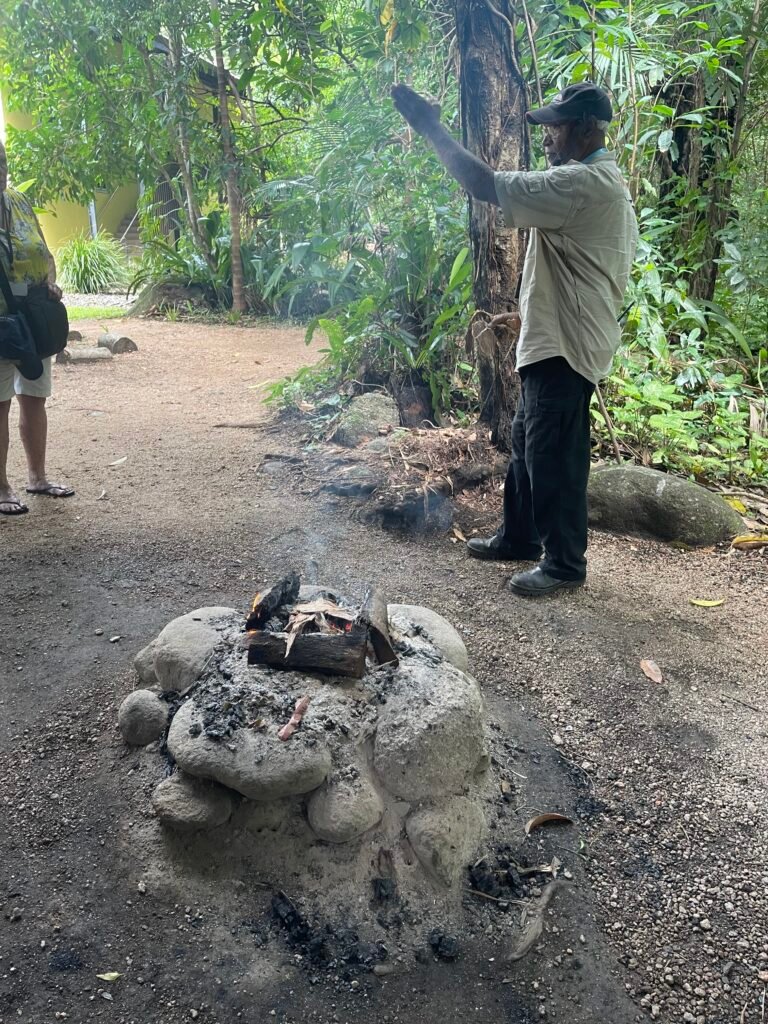
Smoking ceremony
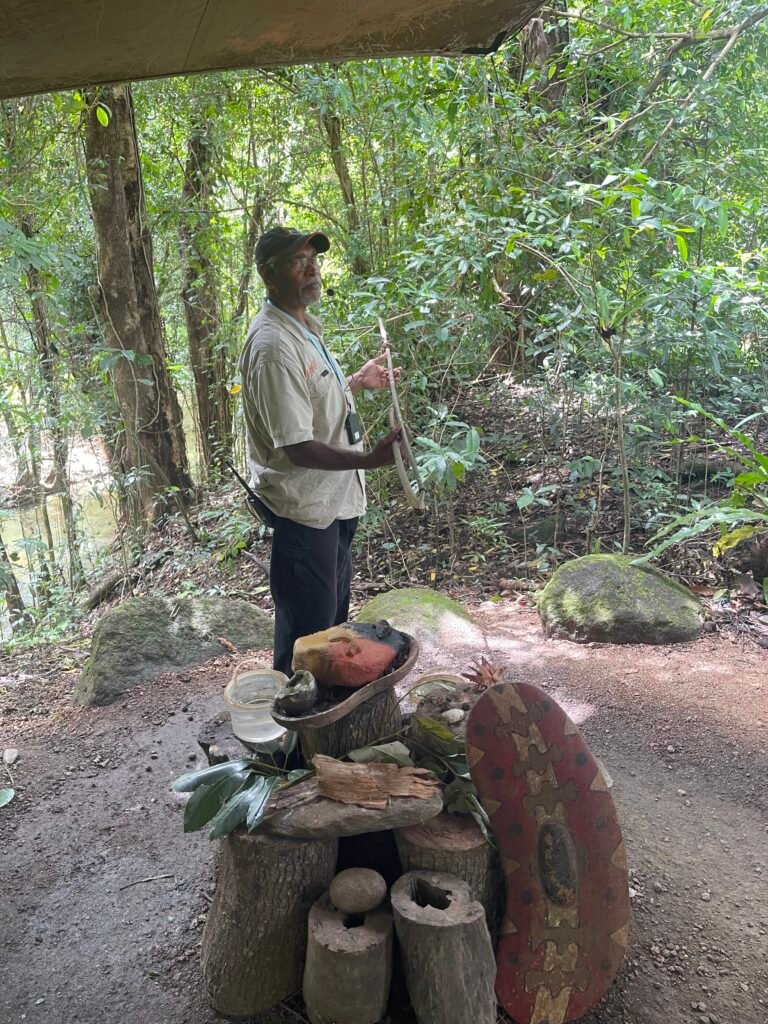
A local Kuku Yalanji showing us his traditions. The large wooden piece on the right is used for protection if someone tries to injure you, for rain protection when placed on your head, for digging in the ground, for paddling when in the water, for carrying a child, and for carrying food etc. Very versatile.

The rainforest vines and foliage
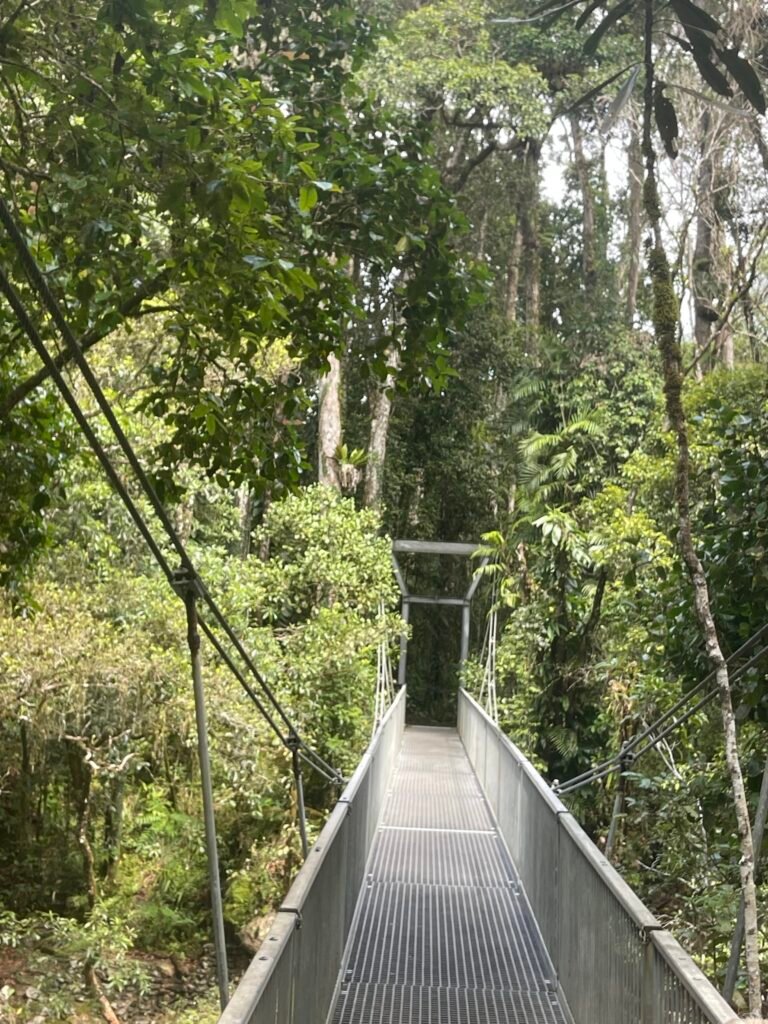
We crossed a suspension bridge
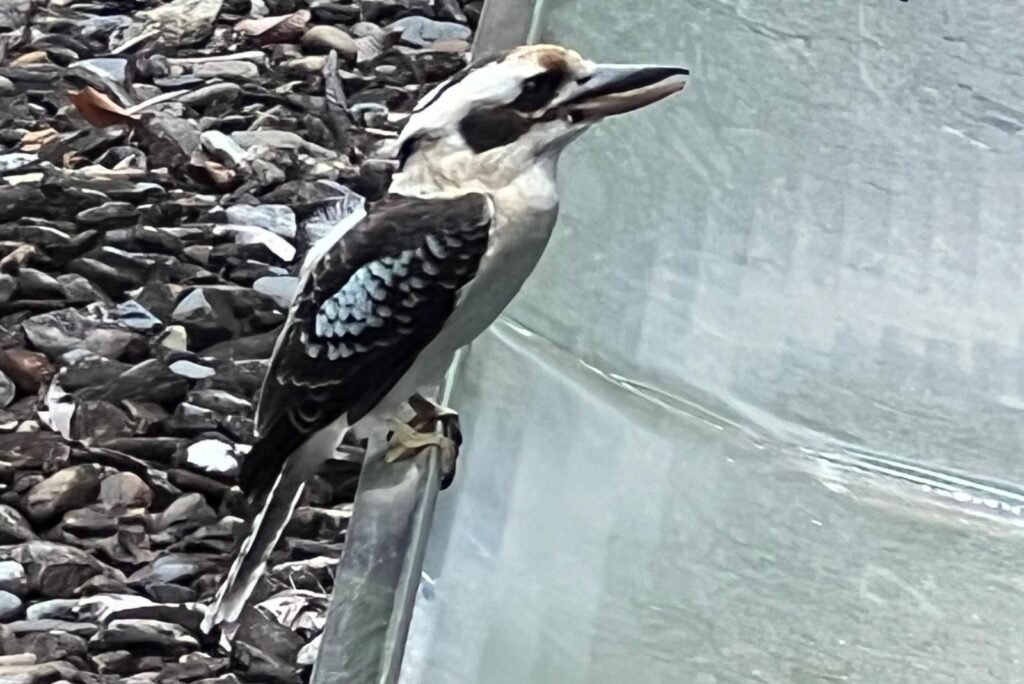
Spotted a kookaburra
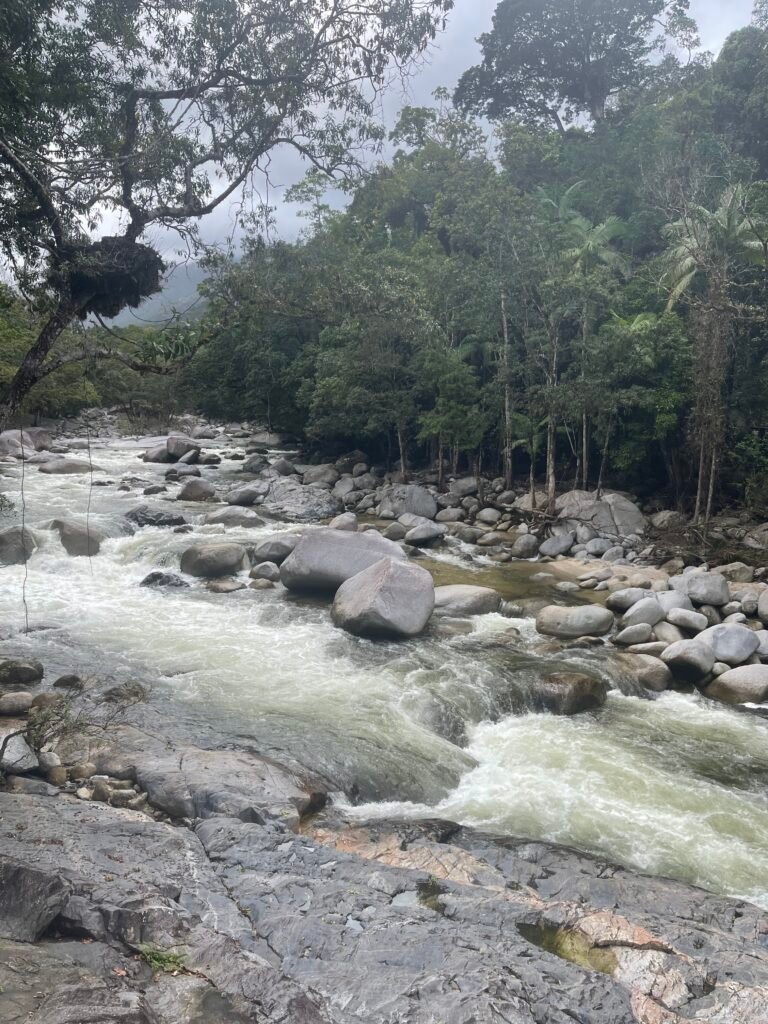
Rapids in the rainforest
